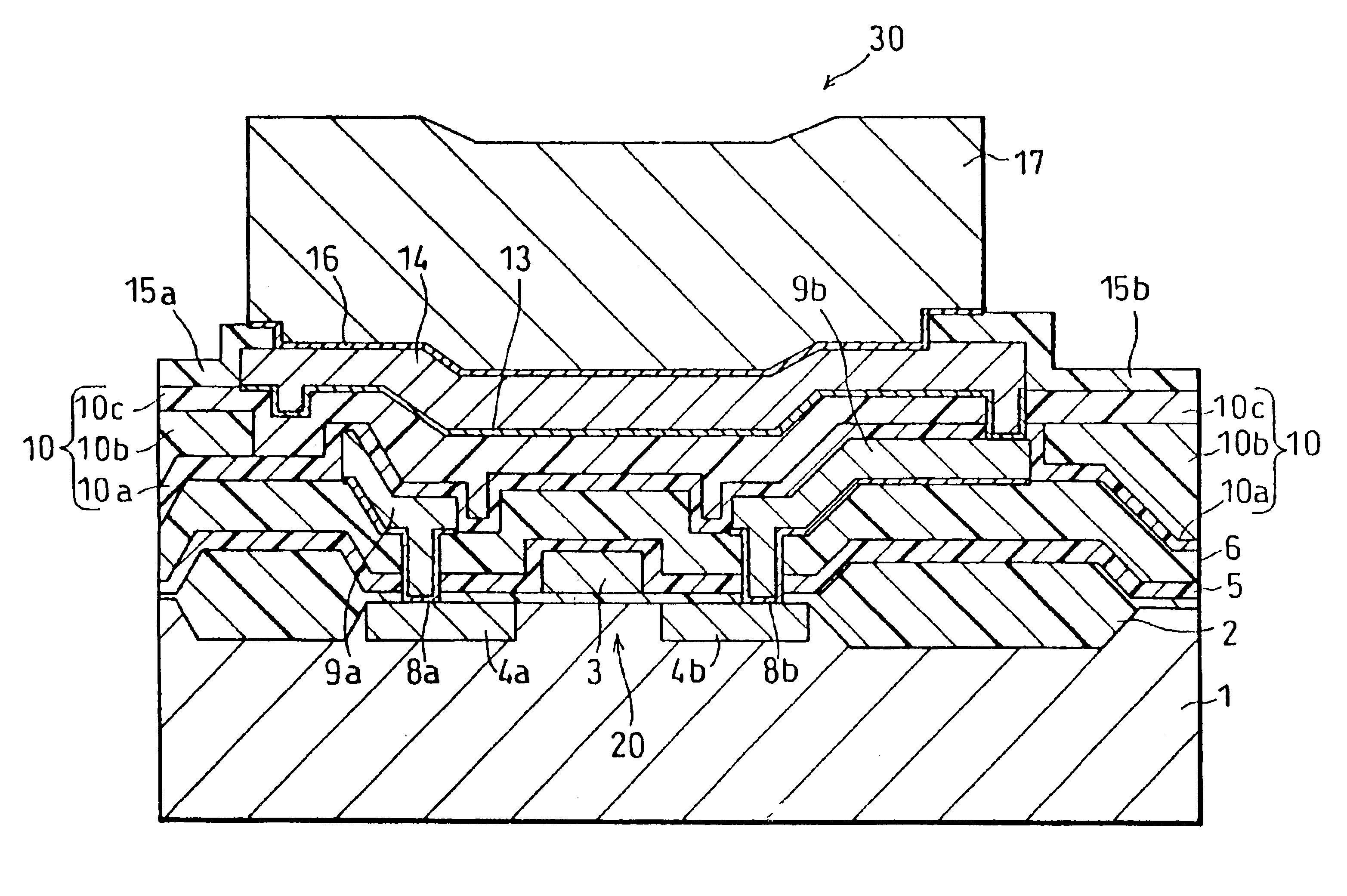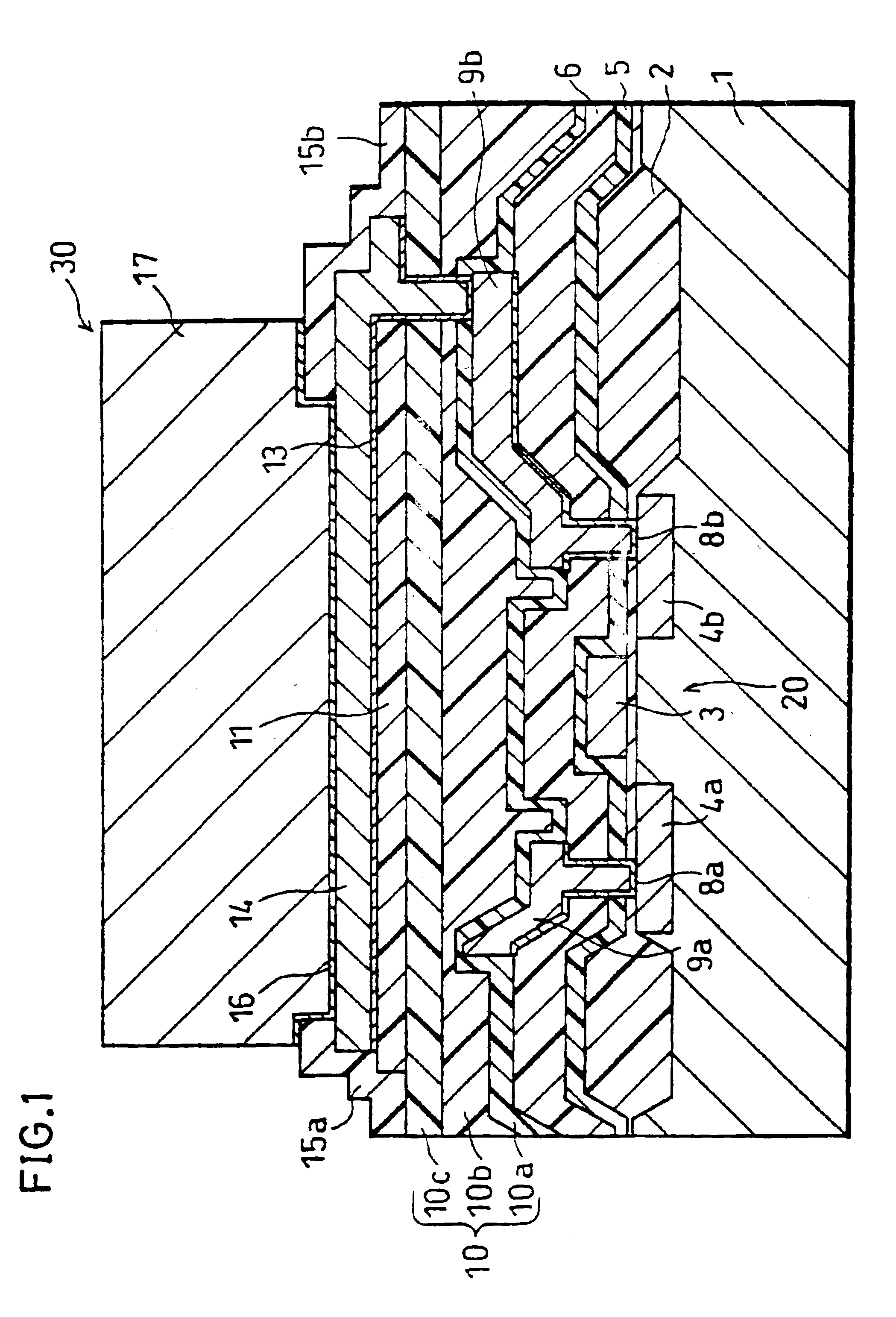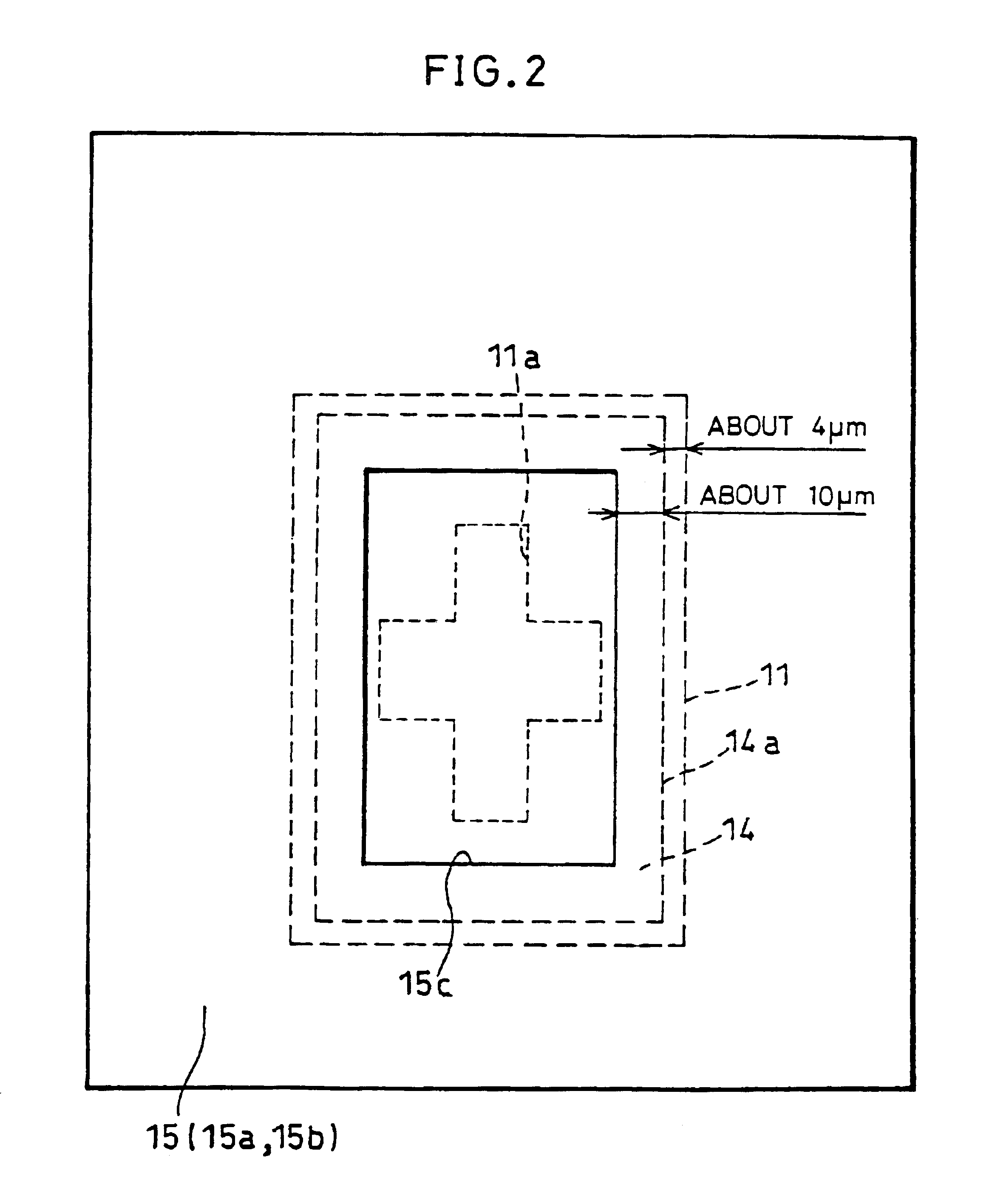Semiconductor device having active element connected to an electrode metal pad via a barrier metal layer and interlayer insulating film
a technology of active elements and semiconductor devices, applied in the direction of semiconductor devices, semiconductor/solid-state device details, electrical apparatus, etc., to achieve the effect of avoiding the exfoliation of the pad
- Summary
- Abstract
- Description
- Claims
- Application Information
AI Technical Summary
Benefits of technology
Problems solved by technology
Method used
Image
Examples
second embodiment
The following description will explain another embodiment of the present invention, while referring to the drawings. The members having the same structure (function) as those in the above-mentioned embodiment will be designated by the same reference numerals and their description will be omitted.
As shown in FIG. 5, a semiconductor chip in accordance with the present embodiment has the same arrangement as that of the semiconductor chip shown in FIG. 1 except that: (1) the insulating film 11 is not formed on the third interlayer insulating film 10c; and (2) a portion of the second interlayer insulating film 10b right under the second metal layer 14 is removed.
A manufacturing process of a semiconductor device arranged as above is as follows. The manufacture proceeds through the same steps as those in the first embodiment till the step shown in FIG. 4(c), and then, a film containing silicon, that is, either a silicon oxide film, a silicon nitride film, or a film made of TEOS is formed a...
third embodiment
The following description will explain still another embodiment of the present invention, while referring to the drawings. The members having the same structure (function) as those in the above-mentioned embodiment will be designated by the same reference numerals and their description will be omitted.
As shown in FIG. 8, the passivation film 15 (15a and 15b), which is normally formed so as to cover a part of the second metal layer 14, is formed, in the present embodiment, so as to cover a greater part of the second metal layer 14, so that the stress occurring upon bonding or after bonding is eased. The rest of the arrangement is the same as that in the first embodiment except that the insulating film 11 is provided in the first embodiment while it is not in the present embodiment.
In this case, as shown in FIG. 9, since the second metal layer 14 is 50 μm×100 μm in size, the passivation film 15 (15a and 15b) is formed so as to cover a large part of the second metal layer 14, with an o...
fourth embodiment
The following description will explain another embodiment of the present invention, while referring to the drawings. The members having the same structure (function) as those in the first through third embodiments will be designated by the same reference numerals and their description will be omitted.
As shown in FIG. 10, in the present embodiment, an interlayer insulating film 40 having a quintuple layer structure (hereinafter referred to as a quintuple-structure interlayer insulating film 40) is formed between the second metal layer 14 and the first metal layers 9a and 9b, so that high reliability is obtained in environmental tests during or after an inner lead bonding (ILB) operation. The arrangement of the present embodiment is completely identical to that of the first embodiment except that the above interlayer insulating film 40 is provided.
A first layer (a first-layer insulating film 40a) of the foregoing interlayer insulating film having the quintuple layer structure (hereina...
PUM
 Login to View More
Login to View More Abstract
Description
Claims
Application Information
 Login to View More
Login to View More - R&D
- Intellectual Property
- Life Sciences
- Materials
- Tech Scout
- Unparalleled Data Quality
- Higher Quality Content
- 60% Fewer Hallucinations
Browse by: Latest US Patents, China's latest patents, Technical Efficacy Thesaurus, Application Domain, Technology Topic, Popular Technical Reports.
© 2025 PatSnap. All rights reserved.Legal|Privacy policy|Modern Slavery Act Transparency Statement|Sitemap|About US| Contact US: help@patsnap.com



